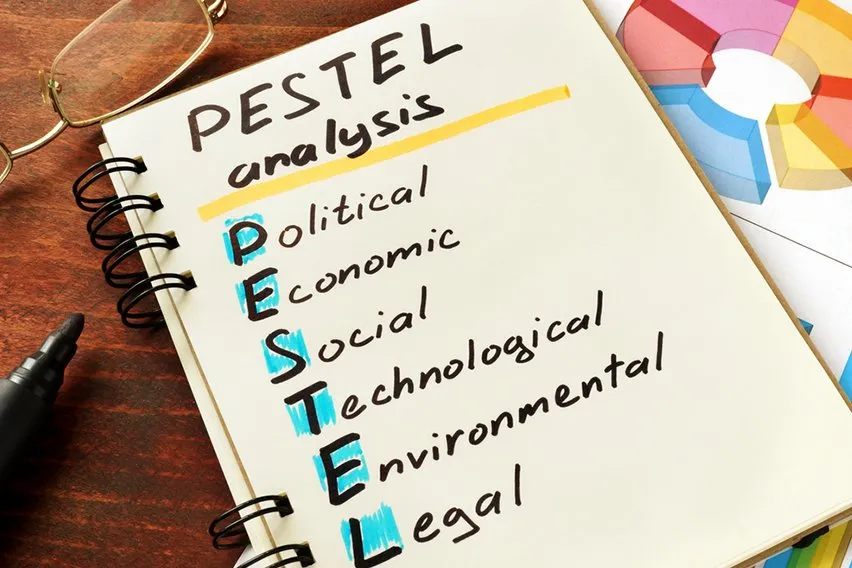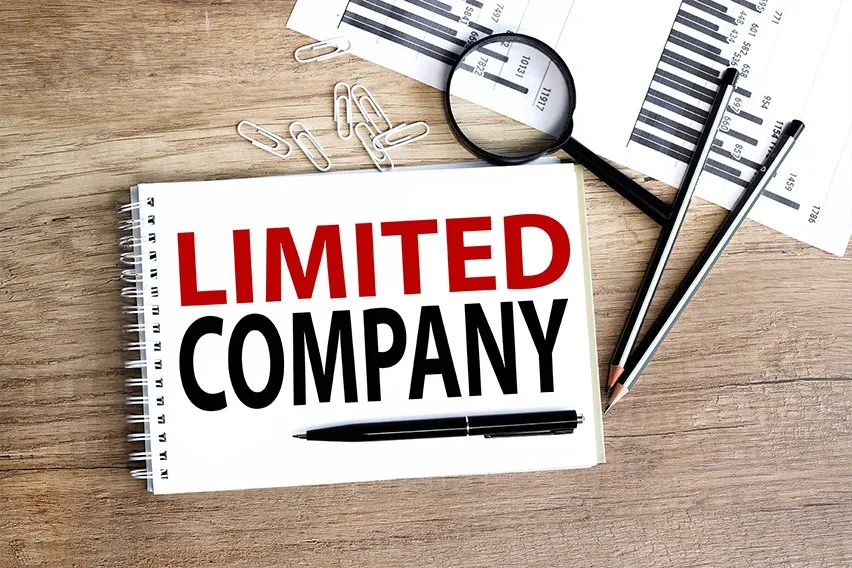What Is PESTEL Analysis? Explanation of the Framework

There are tons of tools and resources that are available to help with your business needs. There are different types of online platforms, CRMs and frameworks that can get followed to gain a competitive edge. One of those strategic management tools is PESTEL, or PESTLE, analysis.
In every business, there are external factors that can affect your overall business strategy. And being able to identify and understand those factors can make a huge difference. Following the PESTLE framework lets you see how factors are influencing the performance of your business.
Here is everything you need to know when it comes to the framework of a PESTLE analysis.
Here’s What We’ll Cover:
What’s Included In the Framework of PESTLE Analysis?
What Is PESTEL Analysis?
PESTLE analysis is a strategic framework. It can get used to analyze the external factors and environmental impact of your business. Different factors can affect your business depending on the industry that you are in. But the concept is to try and see how those external factors influence your business.
There are six different elements outlined in the PESTLE framework. It breaks down into political, economic, social, technological, environmental and legal. One of the most important things to keep in mind is that these factors are dependent on each other. Rather than each factor being independent.
For example, technological factors can affect economic factors. And political factors can affect social or environmental factors.

What’s Included In the Framework of PESTLE Analysis?
As mentioned above, six different elements are outlined in the PESTLE framework. Let’s take a closer look at each of the six elements.
Political Factors
There can be some important political factors to keep an eye out for no matter the type of business that you are in. Politics plays a critical role in how you operate and can help balance the systems of control and free markets. It’s also important to take into account any opportunities or threats as you continue to scale and grow.
One political factor to watch for is government stability where you operate. Other factors can include social policies, trade regulations and any foreign trade policies. You could also consider relevant taxation policies, consumer laws or even the corruption level.
Economic Factors
Economic factors play a significant role in the performance of your business and they can have long-term effects. A rise in the inflation rate can affect the way that you price your products and services, for example. Plus, fluctuations in the economy can play a role in customer supply and demand and can limit their purchasing power.
Other factors to watch out for include interest rates, economic growth patterns and foreign exchange rates. As well, some economic factors or government policies might affect foreign direct investment.
Social Factors
What are the factors that affect how your customers purchase your products? Social factors take into account the social environment of your market. For example, buying habits in the USA vary from the likes of Europe or Asia.
There is a lot that can get considered when it comes to social factors. Things like watching for evolving cultural trends or movement in population analytics. Social factors also account for changing demographics and differences in education levels. There can also be market segmentation or socio-cultural factors.
Technological Factors
Today’s digital climate offers a ton of technological advancements and evolving trends. With each passing year, the role of technology within business is increasing. There are more and more processes and tasks that can get completed with the help of technology.
Technological trends are constantly evolving. Recognizing areas that can help with operational efficiency can help you stay ahead. When you are considering different technological factors, be aware of potential disruptive innovations. For example, streaming services such as Netflix or Hulu disrupted the role of traditional cable television.
Some other technological factors could include things like new innovations or technological platforms. They might also include situations like the rate that some technologies or innovations are able to advance.
Environmental Factors
The changes to the environment around the world have a lasting impact on what you can or cannot do. And the impact that the environment has is becoming more and more of a concern. Both consumers and businesses can get penalized for adverse effects on the environment.
It’s also worth noting that consumers in general are showing more loyalty towards brands that have a positive impact on the environment. And it works in the opposite way, as well. If your brand is ignoring its responsibility to the environment then consumers are willing to switch to the competition.
Some of the most common factors include waste disposal laws and energy consumption regulations. They can also include things like environmental protection laws that your business might need to follow.

Legal Factors
The last thing that you or your business needs to do to get caught up in legal issues that could have been avoided. Knowing the details of certain laws and regulations in your area will make sure that you don’t find yourself with unnecessary legal costs.
It depends on the type of business that you operate and the industry that you are in. But there are some common legal factors that you can focus on to better understand regulations. A few of the factors could include antitrust laws, patent infringements or product regulations.
They can also include areas such as employment regulations and health and safety regulations that you must follow.
Key Takeaways
There are certain details and situations about your business and how it operates that you need to know. Understanding these details helps you avoid costly mistakes. That’s where implementing a PESTLE analysis can help.
The great thing about PESTEL analysis is that you can use it for anything. You can use the analysis to help you make more informed business decisions or some managers might use it before starting a big project. The main thing to keep in mind is that you want to identify any factors that can have strategic or competitive consequences for your business.
Once you can understand what goes into each of the PESTLE elements, you can use the information to create a strategic plan. Include details for political, economic, social, technological, environmental and legal factors. You can identify any opportunities or threats and plan accordingly.
Did you enjoy reading this guide? Head over to our resource hub for more content!
RELATED ARTICLES

 How to Calculate Statutory Redundancy Pay
How to Calculate Statutory Redundancy Pay WACC Formula, Calculations & Definition
WACC Formula, Calculations & Definition How to Cancel a Direct Debit: Everything You Need To Know
How to Cancel a Direct Debit: Everything You Need To Know What Is Debt-to-Equity-Ratio & How to Calculate It?
What Is Debt-to-Equity-Ratio & How to Calculate It? What Is Per Diem? Everything You Need to Know
What Is Per Diem? Everything You Need to Know What Is a Limited Company and How to Set One Up in the UK
What Is a Limited Company and How to Set One Up in the UK